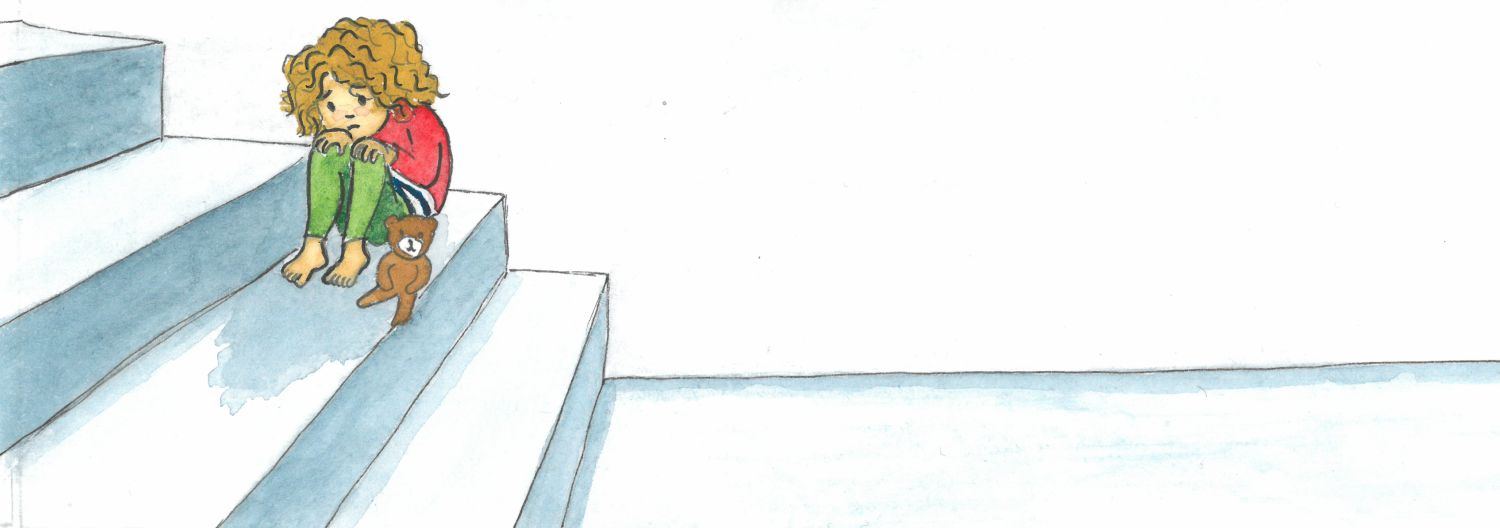It’s very common and normal for children to be more anxious in the first month after a traumatic event. Children often try to avoid situations, thoughts or people that remind them of the traumatic event.
Separation Anxiety
- Minimize separations and keep separations as brief as possible in the beginning, and try to be close to your child, especially if your child is in hospital.
- For brief separations, it’s important to let your child know where you are going and when you will be back.
- Say goodbye briefly, and don’t prolong the situation. Make sure your child is engaged in an enjoyable activity before you leave.
- You can increase your child’s feelings of safety by giving them something that they like or something that reminds them of you (e.g. a scarf, etc.).
Sleeping problems
- Explain to your child that they can soon sleep alone again and that their anxieties will decrease very soon.
- If your child asks to sleep in your bedroom this may be helpful for a limited time (for, say, three nights), preferably on a separate mattress.
- Sometimes it’s helpful for the child to sleep with a sibling in the same room. Only allow it when the sibling isn’t disturbed and agrees to this.
- Give your child a feeling of security and help them to feel comfortable in their bed and in their room. Give your child something that belongs to you (a pillow, scarf, etc.) or put a dream catcher in your child’s room.
- Help your child to think about something nice before going to bed.
- Sleeping rituals are very important (for instance, telling a story, sing a lullaby, speaking with your child about their day, etc.). Make sure that your child always goes to bed at about the same time.
- Try to ensure that your child has no excitement one hour before bedtime (video games, TV, etc.)
- If your child finds it difficult to fall asleep, let them listen to an audio book or music. Most children then fall asleep by themselves.
Excessive worries
- Take your time to find out what kind of worries your child has.
- Describe feelings like anger, sadness or fear, and ask your child which of these feelings they have. You can, for example, draw emojis or smileys for different feelings on paper.
- Assure your child that you and other adults protect them and give them a feeling of security.
- Don’t force your child to speak about the traumatic event, but let them know that they can speak about their worries and anxieties with you at any time.
Fear of things, people or places which remind your child of the traumatic event
- The longer a child avoids trauma-related reminders, the longer this behavior will last.
- Explain to your child that it’s normal to be scared by bad memories and that these memories and worries will go away over the coming weeks.
- Help your child to understand that remembering something doesn’t mean experiencing it again. Memories are always about something in the past.
- Provide safety and let your child know that you will protect them.
- Try to help your child face fearful situations with courage. Praise your child for successfully facing scary situations, and reward brave behavior.
Avoiding speaking about the traumatic event
- Don’t force your child to speak, but let them know, that they can speak about their worries and concerns with you at any time.
- Don’t wait until your child mentions the traumatic event by themselves. Instead, offer your child opportunities to speak about the traumatic event.
- Talk openly with your child about the traumatic event and encourage them to express their feelings.
- Avoid discussing your own fears and worries with your child or in front of them.
- Provide appropriate drawing and play material to your child; many children will use this to express their feelings about the traumatic event.

